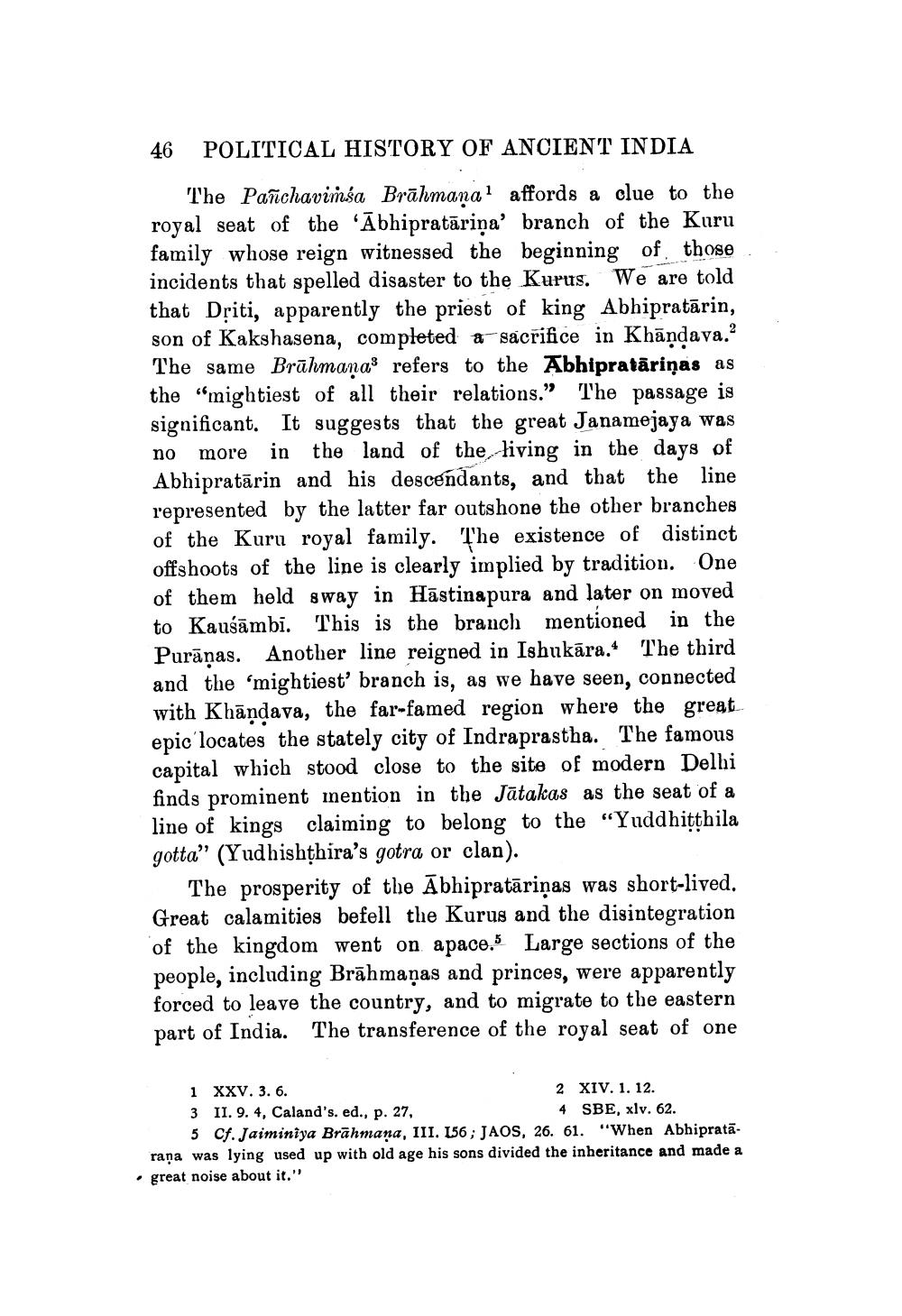________________
46 POLITICAL HISTORY OF ANCIENT INDIA
The Panchavimśa Brāhmaṇal affords a clue to the royal seat of the 'Ābhipratāriņa' branch of the Kuru family whose reign witnessed the beginning of those incidents that spelled disaster to the Kurus. We are told that Driti, apparently the priest of king Abhipratārin, son of Kakshasena, completed a sacrifice in Khāndava.? The same Brāhmana' refers to the Abhipratāriņas as the "mightiest of all their relations." The passage is significant. It suggests that the great Janamejaya was no more in the land of the living in the days of Abhipratārin and his descendants, and that the line represented by the latter far outshone the other branches of the Kuru royal family. The existence of distinct offshoots of the line is clearly implied by tradition. One of them held sway in Hāstinapura and later on moved to Kaušāmbi. This is the branch mentioned in the Purānas. Another line reigned in Ishukāra. The third and the 'mightiest branch is, as we have seen, connected with Khāndava, the far-famed region where the great epic locates the stately city of Indraprastha. The famous capital which stood close to the site of modern Delhi finds prominent mention in the Jātakas as the seat of a line of kings claiming to belong to the "Yuddhitthila gotta" (Yudhishthira's gotra or clan).
The prosperity of the Abhipratāriņas was short-lived. Great calamities befell the Kurus and the disintegration of the kingdom went on apace.5 Large sections of the people, including Brāhmaṇas and princes, were apparently forced to leave the country, and to migrate to the eastern part of India. The transference of the royal seat of one
1 XXV. 3. 6.
2 XIV. 1. 12. 3 II. 9. 4, Caland's. ed., p. 27,
4 SBE, xlv. 62. 5 Cf. Jaiminiya Brāhmana, III. 156; JAOS, 26. 61. "When Abhipratarana was lying used up with old age his sons divided the inheritance and made a • great noise about it."




